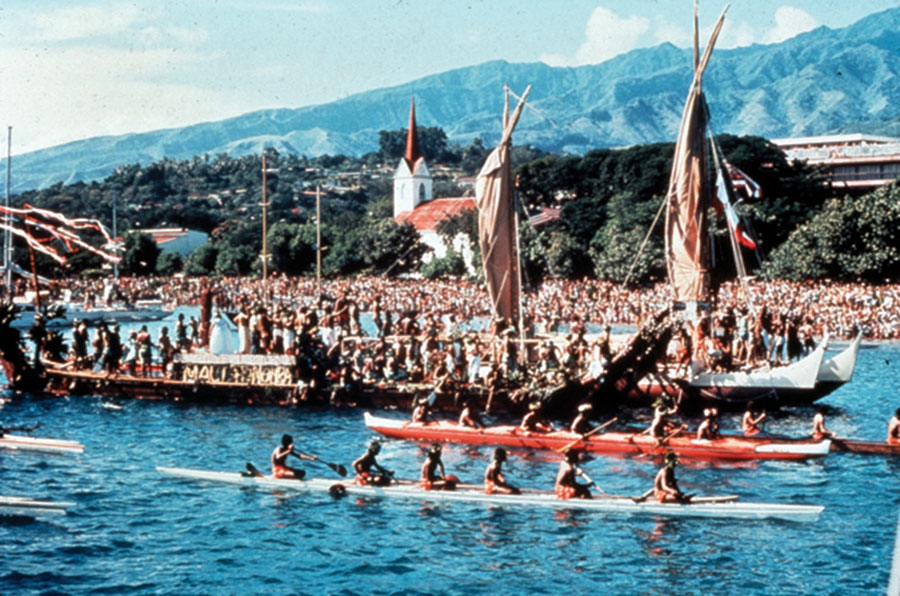
Nainoa became Mau’s apprentice and a disciplined student of the ocean. He learned to feel the subtle differences in the swells, the patterns of the clouds and the wind, and the map of the sea that is given by the stars. After Mau reminded him that mastery takes a lifetime, Nainoa developed a system of learning that he could pass on. “Because of your age, you’ll never see it all,” Mau had said. “If you want Hawai‘i to have a navigator that knows and sees all, send your children.”
It was Nainoa’s friend Lt. Colonel Lacy Veach who inspired Hōkūle‘a’s most ambitious voyage. Gazing at the islands from the cockpit of the space shuttle Columbia, the Hawai‘i astronaut was struck by the inescapable knowledge that “This is Island Earth. It’s the only home we have—infinitely beautiful, infinitely fragile. We need to take care of it, or it won’t take care of us.”
Lacy was fascinated with Hawaiian voyaging canoes. During his second shuttle mission, in 1992, a student radioed up this question: “What are the similarities and differences between canoe and space travel?” Lacy replied, “Both are voyages of exploration. Hōkūle‘a is in the past. Columbia is in the future.” [SpaceGrant.Hawaii.edu/Day-of-Discovery]
That same year, recognizing the potential of the canoe’s continued exploration, Lacy told Nainoa, “You need to go around the world. Take Hōkūle‘a. Let her connect with the Earth and let the Earth connect with her.” Lacy believed Hawai‘i could be the laboratory for positive change, and Hōkūle‘a a school that would encourage children to explore and empower them to take care of the planet.

Fast-forward to 2014. After years of careful preparation, Hōkūle‘a embarked on an odyssey to circumnavigate the globe: the Mālama Honua Worldwide Voyage. (Mālama means “to care for the Earth.”) Over the next three years, she would engage citizens at 150 ports in twenty-three countries, including Samoa, Aotearoa (New Zealand), Australia, Indonesia, Mauritius, South Africa, Brazil, U.S. Virgin Islands, Cuba, the East Coast of the United States, Canada, Panama, and the Galapagos Islands. Blessed by the Dalai Lama, the UN Secretary-General Ban Ki-moon, and Archbishop Desmond Tutu, she became the ambassador of peace that Lacy had envisioned.
Hōkūle‘a returned to Hawai‘i in June 2017, mission complete. She and her crew had come face to face with people around the planet who are, as Nainoa describes, “responding to the damage of Earth with extraordinary acts of kindness and compassion.” These stories, he says, are the ones that need to be shared, the values that need to be taught.
The stories travel both ways. In the wake of her journey, Hōkūle‘a’s crew began to share anecdotes (posted at Hokulea.com) and photos illustrating sustainability and the universal human experience.





